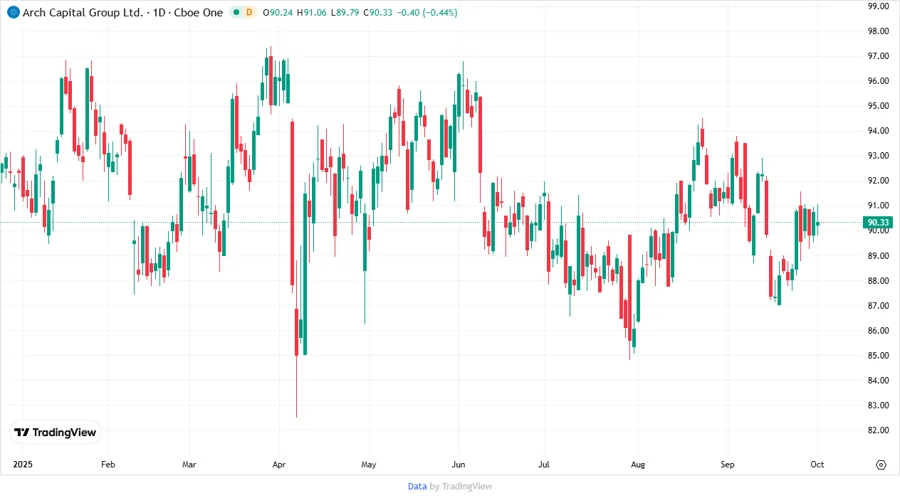October 01, 2025 a 06:00 pm


ACGL: Fundamental Ratio Analysis - Arch Capital Group Ltd.

Arch Capital Group Ltd. operates in a diversified financial services sector, providing comprehensive insurance, reinsurance, and mortgage insurance products globally. Given its solid fundamentals and broad market reach, ACGL stands as a prominent entity in the insurance industry. However, the company's debt-to-equity ratio warrants cautious consideration by potential investors.
Fundamental Rating
The company's fundamental scores reflect a robust financial position, particularly in cash flow management and asset returns. However, it displays some exposure to financial leverage risks.
| Category | Score | Score Bar |
|---|---|---|
| Discounted Cash Flow | 5 | |
| Return on Equity | 5 | |
| Return on Assets | 5 | |
| Debt to Equity | 2 | |
| Price to Earnings | 3 | |
| Price to Book | 2 |
Historical Rating
The historical ratings provide insight into the company's performance trends over time, highlighting the consistency in certain financial metrics.
| Date | Overall | DCF | ROE | ROA | D/E | P/E | P/B |
|---|---|---|---|---|---|---|---|
| 2025-10-01 | 4 | 5 | 5 | 5 | 2 | 3 | 2 |
| (Previous Date) | 0 | 5 | 5 | 5 | 2 | 3 | 2 |
Analyst Price Targets
The consensus among analysts suggests a median target price aligned closely with the stock's current performance, primarily sustaining a hold recommendation.
| High | Low | Median | Consensus |
|---|---|---|---|
| 110 | 108 | 109 | 109 |

Analyst Sentiment
Overall, the analyst sentiment indicates a divided perspective, with a significant number leaning towards holding the stock.
| Recommendation | Count | Distribution |
|---|---|---|
| Strong Buy | 0 | |
| Buy | 14 | |
| Hold | 16 | |
| Sell | 1 | |
| Strong Sell | 0 |
Conclusion
Arch Capital Group Ltd. emerges as a stalwart in the financial sector, fortified by robust metrics in cash flow and asset returns. Nonetheless, its debt to equity ratio poses a moderate risk which should be thoroughly scrutinized by stakeholders. Current analyst sentiment and price targets exhibit a stable yet cautious outlook, indicating a hold strategy might be beneficial in the short term. The consistent historical performance affirms the company’s steadiness but underscores the importance of monitoring future financial dynamics.
